
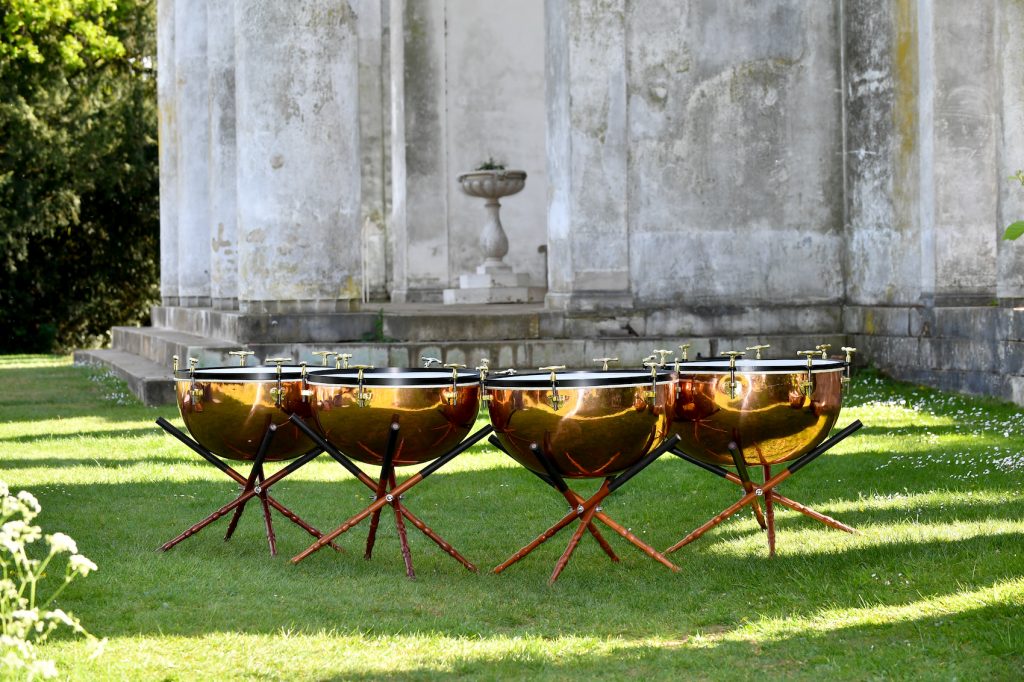
Many of my period-style timpani are refurbished drums made in the early or middle part of the 20th Cenutury that started out being much deeper. Hawkes are most commonly found, but there are many other makes such as Parsons, Besson, Boosey, Hards and Ajax. If you go to the Information page you can see the step-by-step process undertaken by Pete Woods of Henry Potter’s. The result is an ‘as new’ timpani with a conventional ‘half-round’ classical shape, or a more straight-sided baroque shape. They vary in sizes from 22″ and 24″ as a pair with thick English calf heads for baroque music, up to a set of 4 (normally 22″, 24″, 26″, 27.5″) for classical repertoire. I usually use goat heads on these late classical / romantic drums.
Before
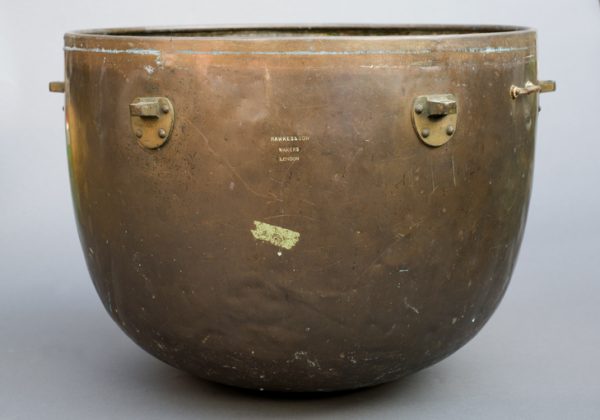
After (baroque shape)
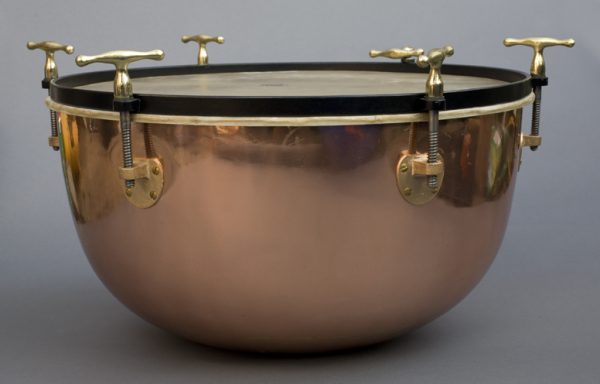
After (classical shape)
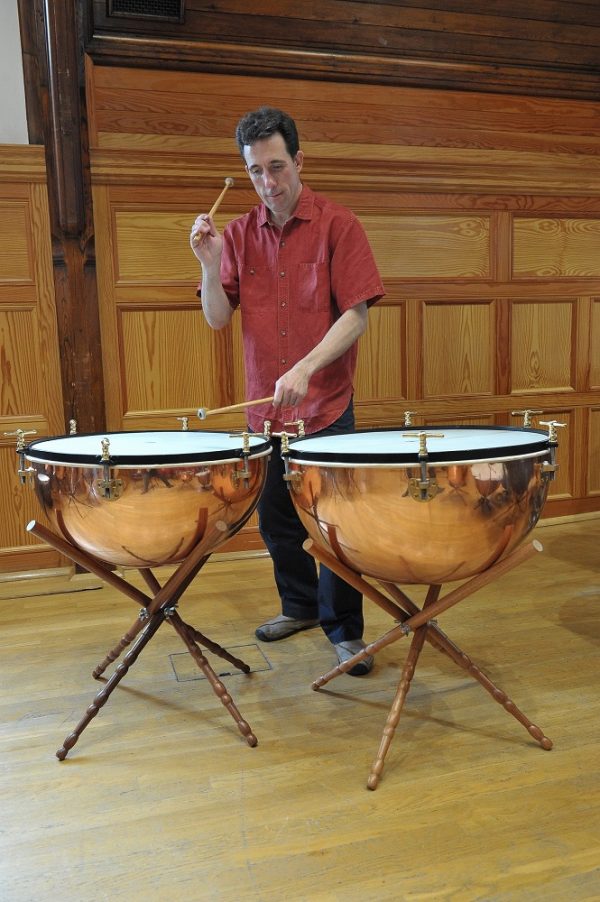
Although there are limits on how much the shape of a bowl can be transformed, the photo below shows some of the different shapes that we are able to produce. The classical shape is on the left, and the baroque on the right. The baroque drum has straighter sides to increase the volume of the kettle. This is important when you consider that sometimes you will need to play a G at baroque pitch of A=415 (effectively a ‘modern’ F#) on a 24″ drum.
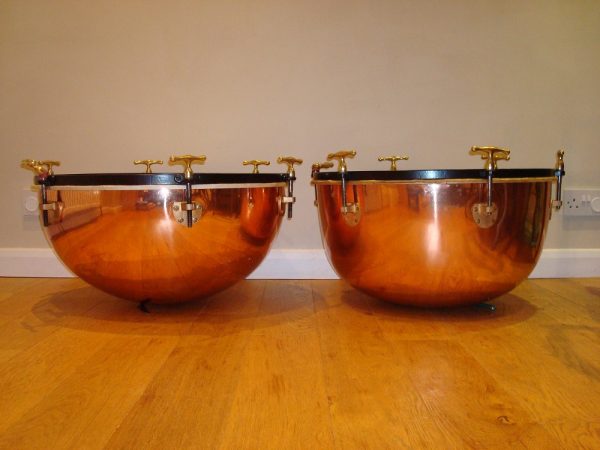
I use these timpani both in period-instrument groups and modern chamber orchestras.
You can hear them in Beethoven’s 4th and 7th symphonies with the Academy of St Martin-in-the-Fields directed by Joshua Bell. 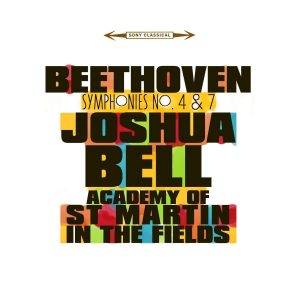
And in Berlioz’ Symphonie Fantastique with OAE and Sir Roger Norrington
In rehearsal:
2nd timpani Scott Bywater. Percussion Glyn Matthews, Ben Hoffnung, Richard Horne.
1st Movement
2nd Movement
3rd Movement
4th Movement
5th Movement